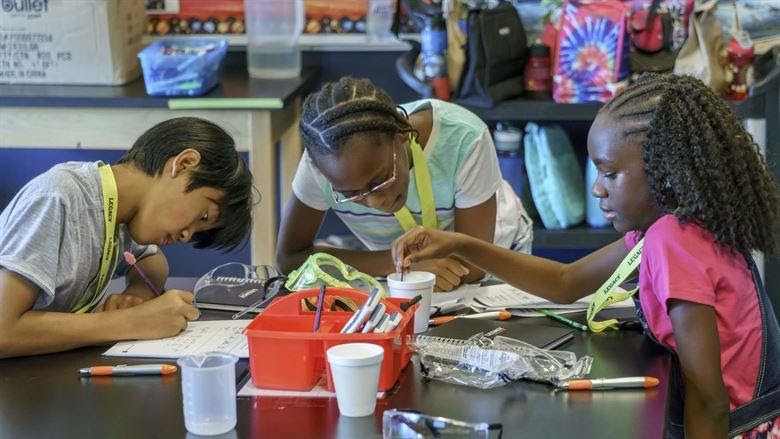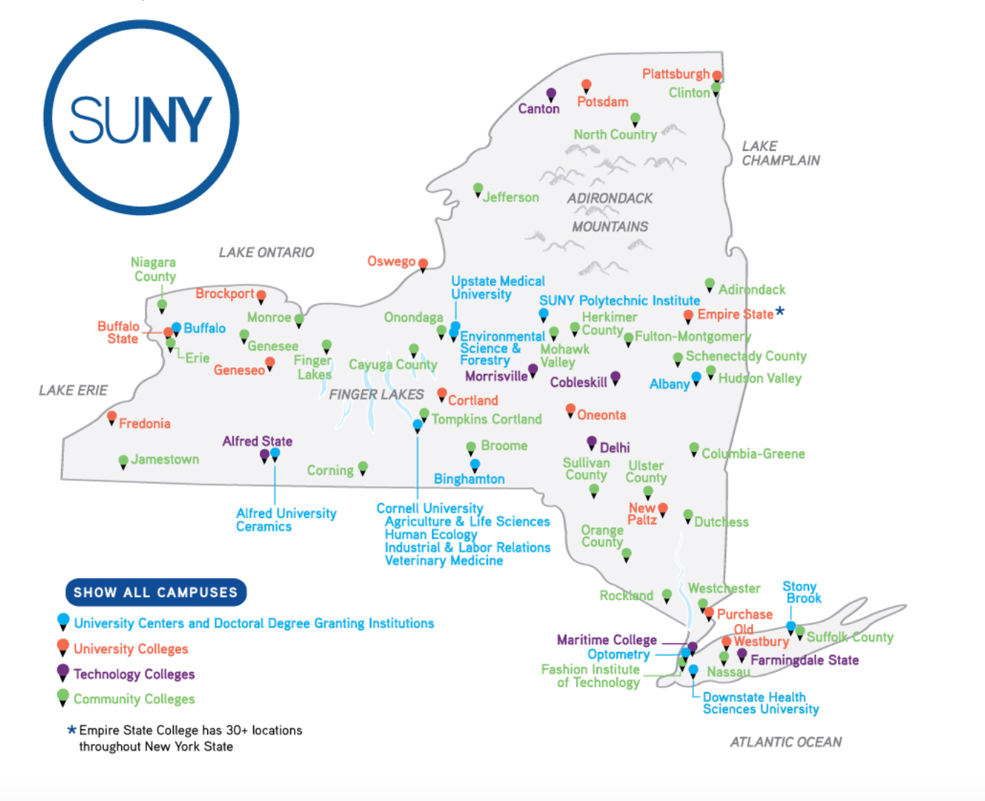
Students enjoying enrichment activities at a Fresh Air Fund Camp (photo: Fresh Air Fund)
The crisis in New York City apartments and neighborhoods grows by the day. Social distance saves lives, but the effects of long-term isolation on families and children will be felt for years unless creative action is taken now.
New York State needs to plan and develop a system of large sleep-away summer camps upstate for city kids who are otherwise facing many months of life in overcrowded apartments. As the temperature rises, and school reopening is delayed, so will family frustration. Shuttered playgrounds and Mayor de Blasio’s massive cuts to the summer youth employment program will only worsen the situation come the summer months.
Where could such extensive summer camps be developed? The upstate campuses of State University of New York (SUNY) and private colleges that have shifted to online learning through the summer can be rapidly developed into such camps. The closure of colleges has left empty dorms (with space for many thousands of kids), classrooms, cafeterias, gyms, and quadrangles that could be refashioned in the coming weeks, for a June 1 start date, as enrichment camps for K-12 students.
Such a plan for campuses, of course, assumes that they will not be needed for medical use thanks to social distancing. So far, thankfully, Governor Cuomo’s successful PAUSE program has forestalled the transformation of campuses into hospitals. We should, therefore, find creative uses for such amazing facilities in a time of social crisis. If the Javits Center can become a hospital, then college campuses can become summer camps.
 (The scale of the SUNY system, and the large number of residential dorms, offers opportunities for extensive summer camp programs. Private campuses could also be utilized.)
(The scale of the SUNY system, and the large number of residential dorms, offers opportunities for extensive summer camp programs. Private campuses could also be utilized.)
Why send the students to camp? All kids need regular sociability with children their own age for mental health; X-Box, group chats, and Netflix are not going to sustain healthy child development. Campuses also have lots of fields, athletic facilities, and natural surroundings that can inspire students and help them stay fit. Campuses also have plentiful opportunities for educational enrichment. The remarkable facilities on many campuses, such as museums, instructional science labs, computer labs, libraries, and more could help make learning fun for many students. The success of the Fresh Air Fund camps can be a model for program quality.
Who would attend summer camps? Participation in the program, to be sponsored by New York State, would be free and based on voluntary parental permission. Many parents will eagerly embrace such a summer opportunity for their children. In particular, city parents with essential and dangerous jobs desperately need quality child care so that they can continue to run the trains, hospitals, sanitation, and other services the city needs.
Why sleep-away? Students who attend programs in the city and live at home can bring disease back to their apartments and vulnerable older relatives. This is one reason the mayor has cut funding for youth summer employment. At summer camp, however, asymptomatic children would not pose a risk to their parents or grandparents, especially those living in close quarters. Sleep-away camp is a way to practice social distancing while children get enrichment. Time away from families may also help reduce stress in households.
Who would staff the schools? Camp counselors will be college-age students or recent graduates. This demographic has a low viral risk factor and could work and live with children safely. Upstate counties can benefit when their young local residents get jobs in the summer as camp counselors, food service workers, nurses, custodial staff, and program administrators. Community non-profits, with extensive experience in youth programming, could run the camps. Specialty summer camps in arts or sports currently offered on upstate campuses could also be subsidized to scale up for city kids. The key to making this work is social distance. Staff and teachers must be required to live on campus away from their families and nearby towns to minimize the risk of disease.
Given the massive unemployment numbers, such an opportunity is likely to attract well-educated counselors and talented program administrators. It goes without saying that all employees in such a program, as with any youth program, must be carefully vetted. Think of this as an updated version of the successful Civilian Conservation Corp that rebuilt our parks during the Great Depression while reducing unemployment among the young.
What about the threat of disease to upstate communities, teachers, and individuals? These threats could be limited through restrictions of the children and young staff to the campuses. At traditional sleep-away camps everyone lives on campus, including the nurse, and it works. SUNY campuses are ideal because so many are on large and isolated forest and field parcels. Other private campuses are often isolated as well from the main residential areas of town or are located in areas that are primarily rural.
We all hope that a rapid medical solution to the new coronavirus can be found, but there are medium-term steps that can be taken to improve children’s physical and mental health, provide them enrichment, relieve families, and offer other benefits. New York State has invested billions in developing a magnificent system of university campuses. We should be looking at creative options for making best use of these resources during the crisis. The planning needs to start now.
***
Nicholas Dagen Bloom is Professor of Urban Policy and Planning at Hunter College and author of How States Shaped Postwar America: State Government and Urban Policy (Chicago, 2019) among other works.
***
Have an op-ed idea or submission for Gotham Gazette? Email This email address is being protected from spambots. You need JavaScript enabled to view it.




